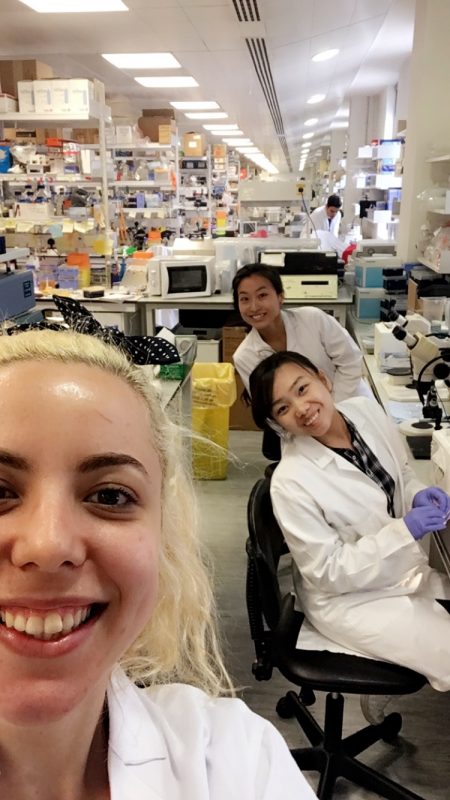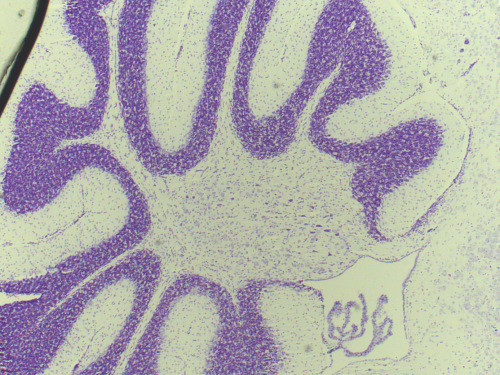BSDB Gurdon Summer Studentship Report (8)
Posted by BSDB, on 24 January 2017
![]() Established by the British Society for Developmental Biology (BSDB) in 2014, the Gurdon/The Company of Biologists Summer Studentship scheme provides financial support to allow highly motivated undergraduate students an opportunity to engage in practical research during their summer vacation. Each year, ten successful applicants spend eight weeks in the research laboratories of their choices, and the feedback we receive is outstanding.
Established by the British Society for Developmental Biology (BSDB) in 2014, the Gurdon/The Company of Biologists Summer Studentship scheme provides financial support to allow highly motivated undergraduate students an opportunity to engage in practical research during their summer vacation. Each year, ten successful applicants spend eight weeks in the research laboratories of their choices, and the feedback we receive is outstanding.
We will hear four stories from the 2016 class over the next four days, starting with Ji Hye Moon, who undertook a project in Richard Wingate’s lab in King’s College, London. You can read all the previous reports here.
The effects of transient gestational hypothyroidism on the development of foetal cerebellar nuclei

As a graduate medical student with a previous degree in Middle Eastern Studies and Politics, I had not previously been exposed to scientific laboratory work. Progressing through the two years of pre-clinical studies, I surprised myself on just how much I enjoyed learning the science that underpins medicine and I became very aware of my lack of experience in research. I felt that I would benefit enormously from gaining exposure to this field, both in terms of my future competency as a clinician, as well as on my ability to pursue research further down in my career. As such, I felt very privileged to be able to start building up my skills and experience in lab-based research through the summer studentship this year.
The BSDB Gurdon Summer Studentship gave me the opportunity to spend 8 weeks this summer in the lab of Dr Richard Wingate in the Department of Developmental Neurobiology at King’s College London. I joined a project which aimed to examine the effects of transient gestational hypothyroidism on the development of the deep cerebellar nuclei in the foetal brain using mouse and chick models. I found this project particularly interesting as the effects of gestational hypothyroidism in the earlier stages of pregnancies are currently quite poorly understood, yet have been linked to postnatal cognitive deficits in the absence of gross malformations of the foetal brain.
The project used the drug methimazole, which is used to treat hyperthyroidism, in order to induce a transient hypothyroidism in pregnant mouse mothers to study its effect on the development of the foetal cerebellum at various embryonic and postnatal ages. All the brain samples were harvested before I started my studentship, so there were a lot of brain samples ready to be studied using immunohistochemistry (IHC) and in-situ hybridization (ISH) methods.
For the first part of the studentship I helped produce the wax and cryosections of the harvested brains necessary for IHC and ISH experiments. For this part of the work, I learned and honed the basic histology skills hands-on, through wax embedding, wax sectioning and cryosectioning of the mouse brain samples. Although this was quite repetitive work, I actually I found it really enjoyable and experienced a lot of satisfaction when I produced my first slide of two perfectly aligned ribbons each containing five slices of tiny, miniscule embryonic mouse brains.

Finally, the last few weeks of my studentship were spent producing nissl stains of the control and the experimental juvenile mice brains, which I then carefully studied to look for any subtle structural differences. I noted a potential decrease in the density of the Purkinje Cell Layer in the cerebella of the experimental group, but unfortunately was unable to complete a systematic comparison as my studentship came to an end.
I enjoyed the 8 weeks at the Wingate Lab and have benefited enormously from it. From an academic point of view, my science literacy level has improved immensely. Being exposed for the first time to the fields of mice and chick embryology and neuroanatomy as well as learning and practicing a wide range of experimental methods such as IHC and in-ovo electroporation, provided a steep learning curve that kept me focused and busy for the entire length of the studentship.
After spending two years almost exclusively in the lecture theatre, I really appreciated the hands-on learning experience and the stimulating environment. I learned a huge amount from attending the weekly lab meetings, talks and seminars from leading experts as well as interacting with my colleagues at the lab. Most of all, nothing could beat the depth of learning I gained from carrying out the experiments myself. It was fantastic to see the science come alive in front of my eyes and I found it a powerful way to learn and understand complex concepts. I was very lucky in that Dr Wingate encouraged me to tryout a variety of experimental techniques and always made time in his busy schedule for my questions.
The summer studentship was a rewarding experience on a personal level as well. It gave me a taste of what a career in research is like and an insight into the delights and the difficulties of research work. Ultimately, I’ve come to have a greater appreciation and admiration for research scientists and the enormous contribution they make to modern medicine and to the innovations that I will put into practice throughout my medical career.
I am very grateful to Dr Wingate, Dr Wilson, Margarita, Deviana, Tristan & Flo for being great hosts and teachers to me. A huge thank you in particular to Richard and the BSDB for making this opportunity possible for me!
Bibliography
- Fink AJ, Englund C, Daza RA, Pham D, Lau C, Nivison M, Kowalczyk T, Hevner RF. Development of the deep cerebellar nuclei: transcription factors and cell migration from the rhombic lip.J Neurosci.2006;26:3066–3076. doi: 10.1523/JNEUROSCI.5203-05.2006.
Ji Hye Moon


 (1 votes)
(1 votes)